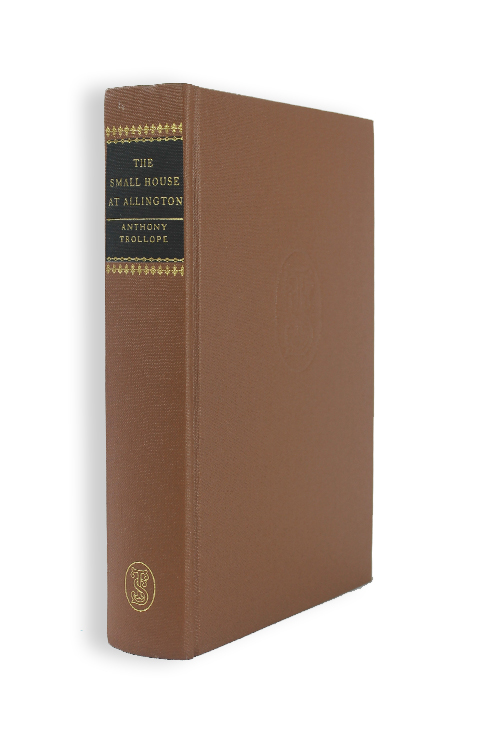Small House at Allington, The
£35.00
Available to members only
Introduction by Margaret Markwick
606 pages with 18 original illustrations by Sir John Everett Millais
London, Smith, Elder and. Co.,1864. 2V.
Originally published in The Cornhill Magazine, Sept. 1862 – April 1864.
Out of stock
This, the fifth of the six Barchester Chronicles, concerns Lily Dale and her sister Bell, living with their widowed mother in The Small House at Allington, supported by old Squire Dale. The Squire wishes Bell to marry his nephew and heir Bernard. However, through Bernard, Lily meets the opportunistic cad, Adolphus Crosbie and they become engaged. The cold-eyed De Courcy family soon interfere, seeking the social-climbing Crosbie as a husband for their own, not very saleable, eldest daughter.
The novel also follows the fortunes of Johnny Eames, something of a portrait of the author in his early guise as a young ‘hobbledehoy’. The novel is about thwarted love. Johnny Eames’ love for Lily Dale is unrequited; Lily’s love for Adolphus Crosbie is rejected when he jilts her; Crosbie’s marriage to Lady Alexandrina De Courcy is a loveless, social-climbing merger. The misery this causes is never better expressed than in the sub-plot concerning Johnny and Amelia Roper, whose mother runs a seedy London boarding house. The portrait of this establishment and its clientele found little favour with the reviewers of the day who found Trollope’s versions vulgar: yet to our sensibilities they seem very contemporary. Johnny’s harsh treatment of Amelia is almost as cruel as Crosbie’s treatment of Lily Dale, but it serves as a contrast to their story. This is thwarted love at its most pathetic, Johnny trifling with Amelia yet having no intention of real commitment. Amelia poignantly sums up the problems that inevitably arise from unrequited love:
I don’t know what’s the good of feelings. They never did me any good.
Adolphus Crosbie on the other hand, despite being a snob, effortlessly draws attention whenever he appears. His is a very realistic character.
The reverse is true of the book’s nominal heroine, Lily Dale. Every indication would suggest that Trollope intended Lily to be enchanting, but characters have a habit of developing lives beyond their author’s control. As Lily’s self-regarding passion for Crosbie begins to pervade the book she becomes irritating, and she evidently began to annoy Trollope too. In his Autobiography he called her ‘somewhat of a female prig.’
Reading the novel has been described as ‘like entering some magic house with many rooms and many windows’, and Trollope pauses to show us surprising aspects. We have a glimpse of Plantagenet Palliser and Lady Glencora; Archdeacon Grantly reappears, and there is a surprising ‘cameo’ appearance from Warden Harding. The Saturday Review concluded that the author ‘can do, in fact, what Miss Austen did, only that he does it in the modern style with far more detail … and analysis of character.’
